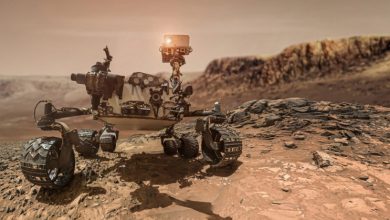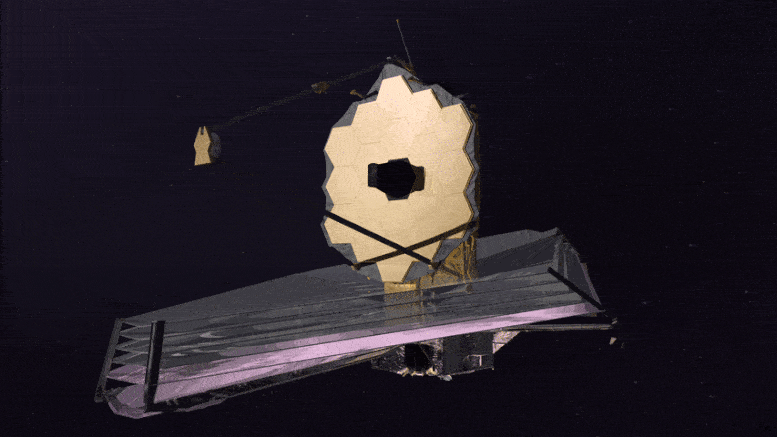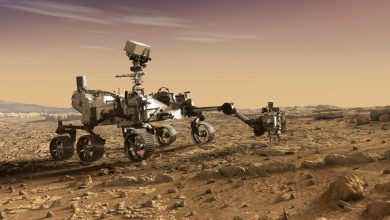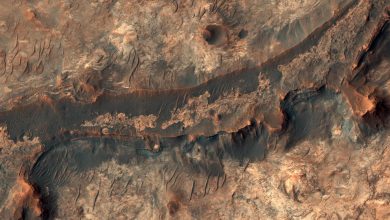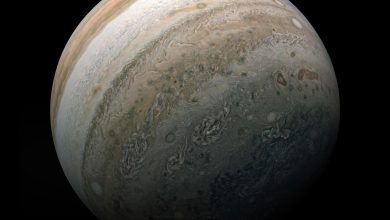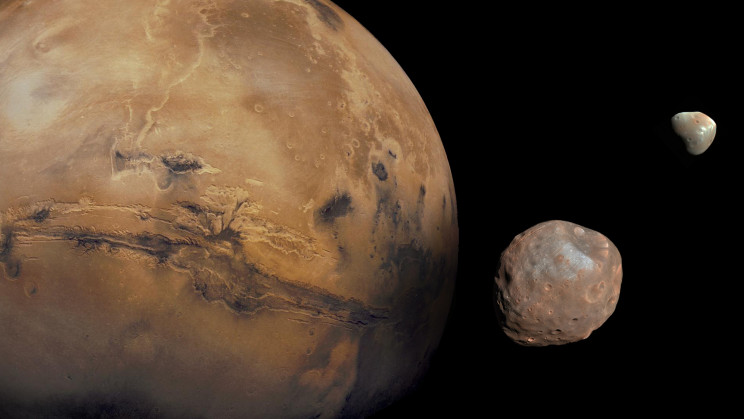
Lead Image: Mars with it’s moons Phobos and Deimos, Image Credit: NASA
Mars, the red planet on which Elon Musk dreams of setting up human colonies, has two bizarrely shaped moons called Phobos and Deimos. Compared to Earth’s moon, Phobos and Deimos are tiny and measure only 13.8 miles and 7.8 miles in diameter respectively. Due to their irregular shape and meteorite-like composition, for a long time, astronomers considered both the satellites to be asteroids and thought that Mars had no moon.
In August of 1877, American astronomer Asaph Hall discovered that Mars has an inner and an outer moon. These two satellites of the red planet were later named Phobos and Deimos, as suggested by an English chemist Henry Madan. Interestingly, the planet Mars was named after the Roman war god of the same name, and so its moons received their names from the twin horses (Phobos and Deimos that represent fear and panic, respectively) of the Greek counterpart of the Roman god, Ares.
A detailed overview of the Martian moons
One entire day on Mars lasts for 24 hours and 37 minutes. Its smaller moon Deimos, located at a distance of 14,576 miles (from the center of Mars), takes approximately 30 hours to complete one orbital revolution around the red planet. Meanwhile, Phobos which is moving in an orbit that is only 3,700 miles away from the surface of Mars has an orbital period of 7.66 hours. So, Phobos can perform three complete orbital revolutions around Mars in just one day.
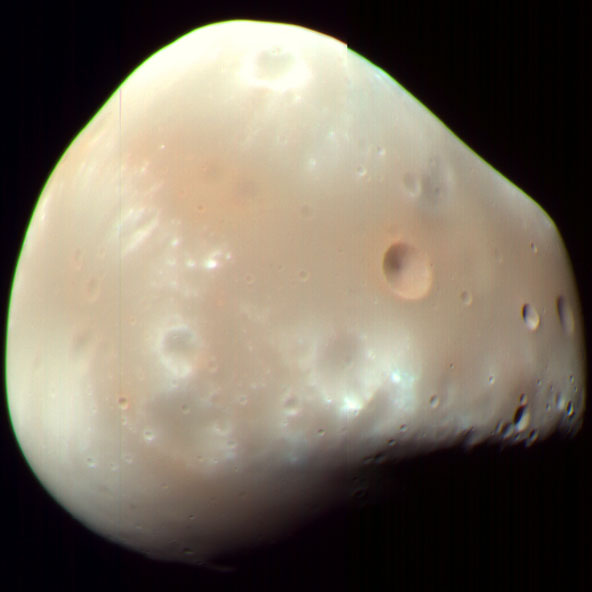
From the data from different Mars rovers, astronomers have concluded that since Phobos is so close to the red planet, it may eventually be pulled apart by the gravity originating from Mars. Moreover, Phobos is coming 1.8 cm (0.7 inches) closer to Mars every century, so probably within the next 50 million years, it will either strike with the planet and turn into bits and pieces or break up and form a ring around the planet. This is why Phobos is also called the doomed Martian moon.
The Earth and its moon are located 238,855 miles far from each other. Due to this distance between the two, Earth’s curvature doesn’t come in the way of us seeing the moon but this is not the case with Mars. Since Phobos and Deimos are orbiting very close, the red planet’s curvature hides them from view from the surface.
This is why both of the satellites are not visible from any Martian region that is located at more than 70 degrees north or south (for Deimos, it’s 83 degrees) from the planet’s equator. Moreover, if you are in the equatorial region of Mars (Martian moons can be best viewed there) and you look at the skyline during the night. At their highest brightness, Phobos would appear to you as a static asteroid and Demos would look like a star only.
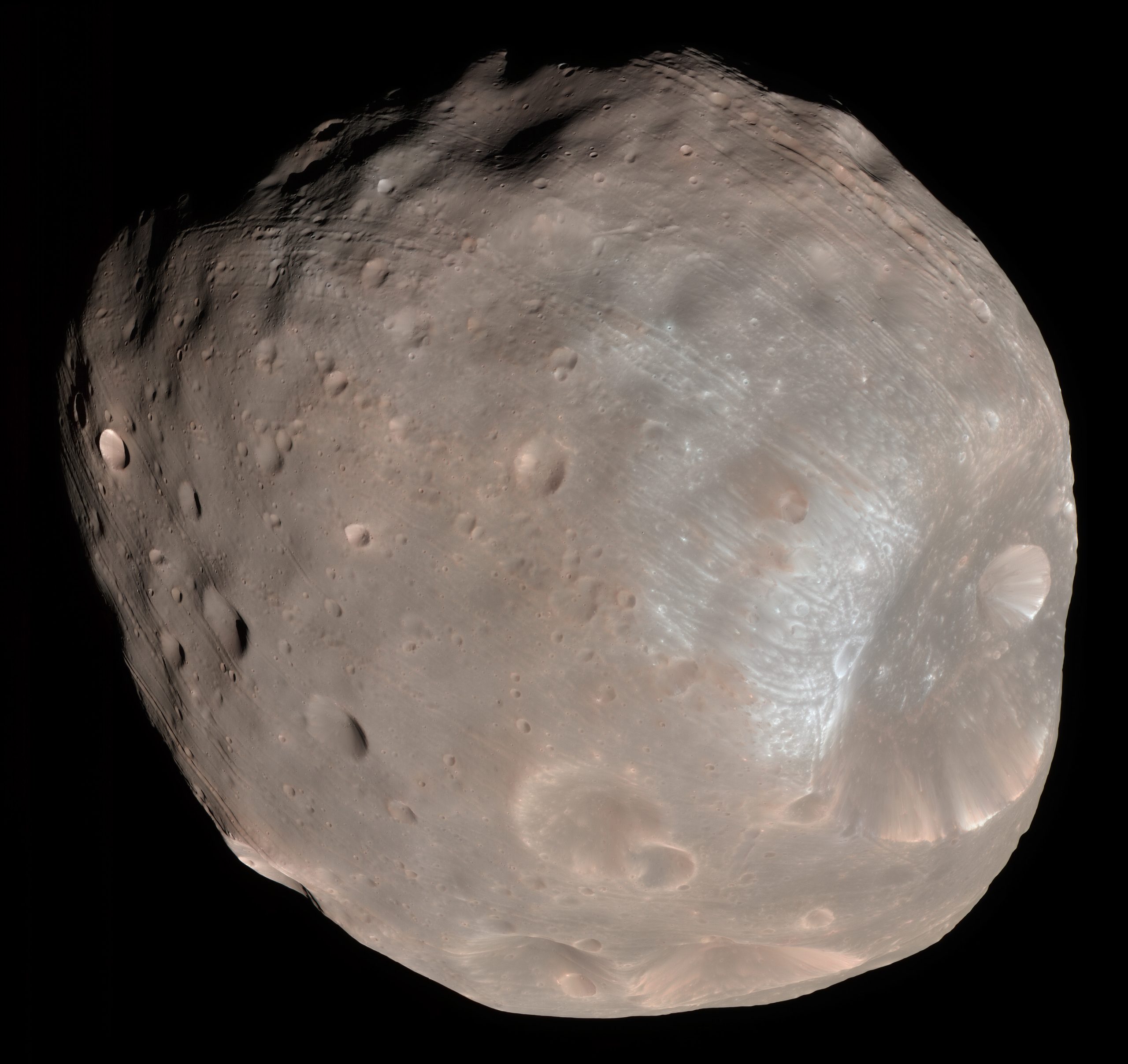
Like our moon, both Martian satellites travel around Mars from west to east, Phobos revolves at a speed of 4,782.5 mph (about 7,700 km/h), and Deimos has an orbital speed of 3022.7 mph (4864.5 km/h).
Theories about the origin of Phobos and Deimos
Both the natural Martian satellites look like two small asteroids. Observations from NASA’s Mars Global Surveyor indicate that they are made up of C-type space rocks that are primarily found in carbonaceous chondrite meteorites and asteroids.
According to Thomas Zurbuchen, who works as an associate administrator at Science Mission Directorate under NASA, “Solving the riddle of how Mars’ moons came to be will help us better understand how planets formed around our sun and, in turn, around other stars.”
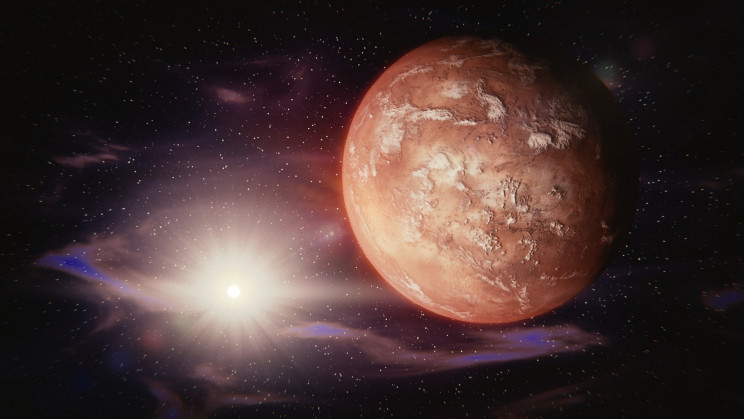
The Martian moons are two of our solar system’s smallest and least bright moons. They are so different than a typical satellite that even astronomers are not sure about the exact source of their origin. One theory suggests that when Mars was newly formed, the planet suffered a collision with another solar system member. Due to the impact, numerous molten rocks were released and gathered in orbits around Mars.
Under the influence of gravity, the molten rocks may have formed larger clumps that later became Phobos and Deimos. In support of this theory, some astronomers argue that the mineral composition of Mars and its satellites resembles one another; for instance, the soil of both Phobos and Mars is rich in phyllosilicates. Therefore, it is possible that both Martian moons originated from the red planet itself. This idea is also similar to the impact hypothesis according to which Earth is believed to have collided with a hypothetical planet Theia 4.5 billion years ago, and the molten debris from the impact led to the creation of the moon.
Another idea that would explain the birth of Martian moons is linked to the asteroid belt that exists between the orbits of Mars and Jupiter. Since C-type carbonaceous asteroids are abundantly found in the asteroid belt, many astronomers believe that Phobos and Deimos are asteroids that traveled away from the belt and later, due to Mars’ gravity, fell into their respective orbits. This phenomenon is called asteroid capture.
Phobos and Deimos have been traveling in their nearly circular orbits around Mars for billions of years but generally, captured asteroids in our solar system are not known for remaining in stable orbits for such long durations. And Mars’ atmosphere is too thin and insufficient to slow down captured asteroids enough for them to settle into their present orbits.
In 2021, a team of researchers from the Swiss Federal Institute of Technology (ETH Zurich) and the US Naval Observatory proposed that Deimos and Phobos rose from a single “proto moon” (a moon during its initial development phase). The team led by geophysicist Amirhossein Bagheri combined the data from NASA’s InSight Mars lander with the information they gathered on the tidal interaction occurring on mars.
The researchers concluded that at the time of its origin Mars was accompanied by a proto moon that later broke into two pieces which settled in a circular and an elliptical orbit around Mars. Over time, the tidal energy from the giant red planet caused the elliptical orbit to also turn into circular.
The research suggests that the larger piece of the proto moon, which we today know as Phobos, occupied the elliptical orbit, is following a spiral path, and is coming close to Mars due to tidal energy dissipation. Whereas Deimos being located in a circular orbit from the start, does not experience any energy dissipation and is going away from mars.
However, the variation in the orbital movement of both Martian satellites and the differences that exist between their respective orbits indicate that it is unlikely that Phobos and Deimos formed together from a single cosmic entity.
Interesting facts about Mars, Phobos, and Deimos
Mars is the only terrestrial planet with two moons, and surprisingly no other moons in our solar system are located as close to their planet as Phobos and Deimos are to Mars. Here are some more fascinating facts about the red planet and its satellites:
- Japanese space agency JAXA plans to send a lander aircraft to Phobos in 2024. As a part of the Martian Moons eXploration (MMX) mission, the lander would collect rock and soil samples from the moon and return in 2029. The researchers from ETH Zurich suggest that this Japanese lander’s information could improve their findings on the origin of Phobos and Deimos. However, Japan is not the only country that has shown interest in the Martian moons. In 1988, the Soviet Union made two failed attempts to explore Phobos using probes named Phobos 1 and Phobos 2.
- Long before Asaph Hall discovered the Martian satellites, German astronomer Johannes Kepler had proposed that since Jupiter has four moons and the Earth has one, the red planet between them should have two moons. However, he couldn’t prove his number-based assumption.
- Mars has the biggest volcano in our solar system, named Olympus Mons. It is believed to have a height of 16 miles (25 km) and a diameter of 374 miles (624 km). In comparison, Mauna Loa is the largest volcano on Earth, spread across 75 miles, the vastness of this Olympus Mons can be imagined from the fact that 100 Mauna Loa volcanoes could be placed inside it.
- One characteristic feature of Phobos is the presence of a large crater called Stickney that spans across 6 miles on its surface. NASA’s Mars Global Surveyor was the first space probe that detected Stickney; due to this crater, the Martian moon has large streak-like patterns. Deimos also has two named craters, called Voltaire and Swift (named after famous writers Voltaire and Jonathan Swift), each of them having a diameter of about 1.9 miles.

Phobos and Deimos could reveal various secrets about the origin of Mars and our solar system. Exploring these tiny satellites could allow us to better understand the planet that we are thinking of inhabiting in the future. Let’s hope the upcoming MMX mission of Japan unravels some of the most exciting secrets held by the Martian moons.

